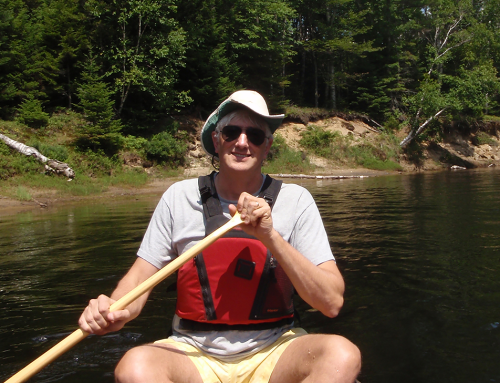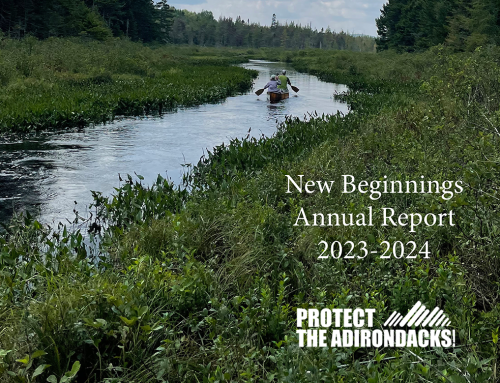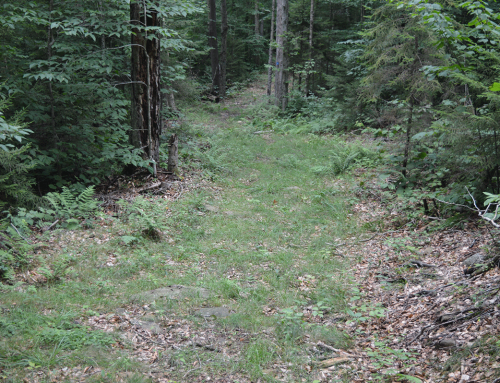February 8, 2012
In the Adirondacks, Joy and Fear Over What a Resort May Bring
By LISA W. FODERARO
TUPPER LAKE, N.Y. — This once-proud logging town in the northern Adirondacks has an embarrassment of natural riches: forested mountains, crystalline lakes, clean air and trout-filled streams. But a string of economic blows has left the downtown pocked with vacancies and has cut the population by one-fifth.
“Without something happening,” the town supervisor, Roger Amell, said, “we’re going to be a ghost town.”
That something arrived last month, when the Adirondack Park Agency, which governs land use in the state park, approved a resort development on 6,300 acres here. The project, the Adirondack Club and Resort, calls for more than 650 units of housing, a hotel, a ski area, a marina and an equestrian center. It is the largest development the agency has ever approved.
The approval came after a nearly decade-long clash between environmentalists and pro-development residents, with the park agency caught in the middle. The contest was depicted by many as a tug of war for the soul of the Adirondacks, a park whose six million acres are almost evenly divided between public forest preserve and privately owned land.
Environmental advocates argued that the resort proposal would set a dangerous precedent by carving up a large section of backcountry for condominiums and single-family homes, along with “great camps” on parcels ranging from 25 to several hundred acres.
Local officials and many year-round residents countered that the plan was exactly what the Adirondacks needed — a new four-season draw that would jump-start the ailing economy of Tupper Lake and serve as a model for smart growth in other struggling towns. Besides, they said, the privately owned backcountry is hardly pristine, with logging roads and hunting cabins among stands of sugar maple, yellow birch and beech trees that have been harvested for decades.
The park agency imposed hundreds of conditions on the project, including an earth-hued color scheme, minimal clearing of vegetation and downcast lighting (to avoid light pollution). Eighty-five percent of the property will be left in its natural state; of the most sensitive land — 4,740 acres of backcountry designated as “resource management” land — 140 acres will actually be built on, with houses sprinkled throughout the site, and the rest preserved through deed restrictions.
“That’s a huge win, as far as I’m concerned,” said Leilani Crafts Ulrich, chairwoman of the Adirondack Park Agency, noting that the existing zoning laws would have allowed far greater density. “What would have happened to this piece of property if it were not master-planned and developed piecemeal instead?”
The approval by the agency and the groundswell of local support for the development preceding it reflect a growing feeling in the area that the “human ecosystem” of the Adirondacks is in trouble, as Jim LaValley, a real estate broker here, put it.
A 2009 report from the Adirondack Association of Towns and Villages offers a snapshot of the area’s problems. School enrollments across the park’s 103 towns and villages fell by 329 students annually from 2000 to 2007, the equivalent of losing one average-size school district every 19 months. The report, noting that the average age of residents was almost 43, projected that by 2020, only the west coast of Florida would surpass the Adirondacks as the nation’s oldest region.
Last fall, Adirondack Life magazine ran a cover story titled “The Other Endangered Species,” referring, of course, to people. And Mayor Clyde Rabideau of Saranac Lake, a nearby village, recently coined the phrase: “We are all Tupper Lakers.”
Hours after the park agency’s board voted to approve the resort, dozens of supporters poured into the Park Restaurant and Woodsmen’s Tavern here to celebrate. There were speeches and backslapping over pints of Saranac Pale Ale and a local favorite, poutine, a dish of French fries, cheese curds and gravy that originated in Canada.
It did not hurt, supporters of the project say, that Gov. Andrew M. Cuomo, a frequent visitor to Saranac Lake, has made economic development a centerpiece of his second year in office. Mr. Cuomo recently appointed Mrs. Ulrich chairwoman of the park agency’s board, and last week he said of the planned resort, “There’s a delicate balance: we want to protect, we want to preserve, but people also need to make a living, and the region has to be economically viable.”
Garry Douglas, president of the North Country Chamber of Commerce, said of the thriving ski town that has hosted two Winter Olympics: “People from New York City visit Lake Placid and say, ‘I don’t see the problem.’ But you only have to go a few miles outside of Lake Placid to see some of the worst poverty in the state of New York.”
While handsome log homes can be glimpsed along Tupper Lake’s back roads, more visible are rickety trailers with thin walls that are a poor match for frigid winters. Downtown, the business district is a study in rural decline, with 1960s-style motel signs looking more dated than retro, and four former clothing stores among the vacancies.
But for the environmental advocates who had long poked holes in the resort plan, the agency’s approval was a bitter defeat. Various groups had raised concerns about the marketability of such housing, the developers’ own finances and the fragmenting of wildlife habitat through new roads and driveways.
“With this vote, it is now clear that the park’s anti-environment and pro-development forces have achieved their long-term goal of capturing control of the park agency,” said John Caffry, a lawyer and board member for Protect the Adirondacks, an environmental group. “It will be open season on subdividing the park’s backcountry lands.”
Environmental groups have until April 1 to file a legal challenge to the park agency’s approval of the project. “We are actively considering our options,” Mr. Caffry said.
In the early decades of the Adirondack Park Agency, which was formed in 1971, tensions around private-property rights occasionally turned violent.
That pitch of anger has subsided. Now even some environmental groups talk about the importance of development. One such group, the Adirondack Council, endorsed the resort plan in the end. Still, the council’s executive director, Brian L. Houseal, wants stronger protections in the future for the park’s resource management lands, which historically were used for forestry but allow housing on very large parcels.
“We all know the Adirondacks need economic development,” Mr. Houseal said. “Our belief is that the future is in revitalizing the town centers and hamlets. We must protect the wild character and ecological integrity of the backcountry because that’s the core value of the Adirondacks.”
For many in Tupper Lake, population 5,971, ground cannot break soon enough on the new resort, whose owners will pay to upgrade an existing town golf course. Tom Lawson, with the development team, said the resort project, to be built over 15 years, would generate at least 550 jobs. When completed, he said, the resort will increase the town’s tax base by $500 million. “Tupper Lake can’t happen without the Adirondack Club, and the Adirondack Club can’t happen without Tupper Lake,” he said.
Perhaps more than anything, residents dream of jobs. They have witnessed the shuttering of the only department store in town, the departure of a local plastics factory and the closing of the Big Tupper ski area. Under the resort plan, the ski area, which has since reopened with volunteers, will be expanded.
“I’m an unemployed truck driver, so it’s great,” Terry Miller, 52, said of the resort. “It’ll mean more work here for everyone.”





